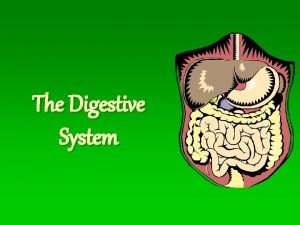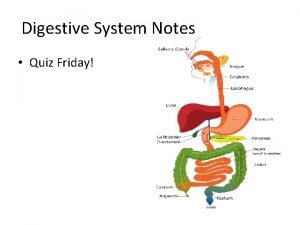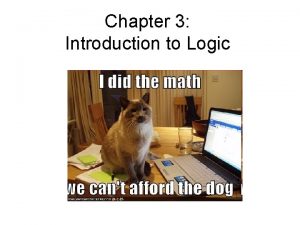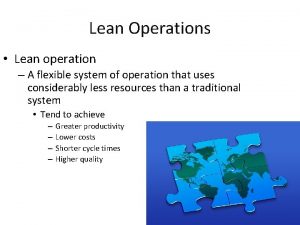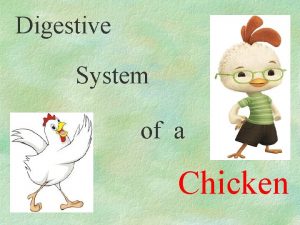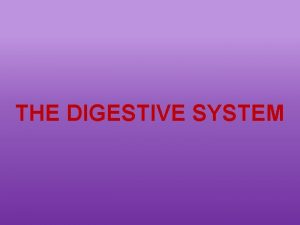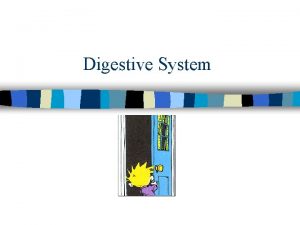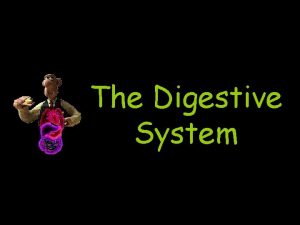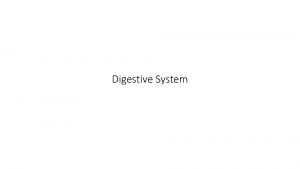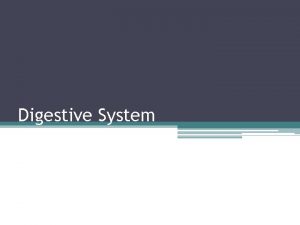The Digestive System Main goal of the Digestive




















- Slides: 20

The Digestive System

Main goal of the Digestive system: The main goal of the Digestive System is to breakdown food so that your body can use it!

Describe the digestive system § The digestive tract is a series of hollow organs joined in a tube from the mouth to the anus. § Accessory organs include the liver, gall bladder, and pancreas. Food does not pass through these organs.

Identify the organs of the digestive system

The 7 stops of the Digestive System…

Stop #1 Mouth § Teeth bite off and chew food into a soft pulp that is easy to swallow. § Chewing mixes the food with saliva, from salivary glands around the mouth and face, to make it moist and easy to swallow.

Mouth (cont’d)… Mechanical Digestion- physically changing the shape of food (through chewing and grinding) **this occurs in the mouth and the stomach Chemical Digestion- chemically changing the food by breaking it down using enzymes **this occurs in the mouth, stomach, small intestine, and large intestine.

Stop #2 Esophagus § The esophagus is a muscular tube. It takes food from the throat and pushes it down through the neck, and into the stomach.

n. It moves food by waves of muscle contraction called peristalsis.

Stop #3 Stomach § The stomach has thick muscles in its wall. These contract to mash the food into a water soup called chyme. § The stomach lining produces strong digestive juices.

Stomach cont’d § The stomach does not digest itself because it has a protective layer of mucus lining the walls.

Stop #4 Small Intestine § This part of the digestive tract is narrow, but very long - about 20 feet. § Enzymes continue the chemical reactions on the food by breaking the food down even further.

Small intestine contd’… § The nutrients are broken down small enough to pass through the lining of the small intestine, and into the blood (diffusion). § Villi- finger-like projections that line the walls of the small intestines. They increase the surface area for nutrient so be absorbed.

Villi…

Stop #5 Large Intestine § Substances that were not absorbed in the small intestine, such as spare water and minerals, are absorbed through the walls of the large intestine, back into the blood.

Large intestine cont’d… § The remains are formed into solid feces, ready to be removed from the body. Importance of § fiber. Bran.

Stop #6 and #7 Rectum and Anus § The end of the large intestine, the rectum, stores the feces. § Feces are finally released through the anus, and out of the body.

Accessory organs 3 Accessory organs: 1. Pancreas 2. Liver 3. Gall bladder

Accessory Organs Pancreas- The pancreas makes digestive juices called enzymes which help to digest food further as it enters the small intestines.

Liver- like a food-processing factory. Produces a digestive juice called bile Gall Bladder- A small baglike part under the liver. It stores bile.
 What is the main goal of the digestive system
What is the main goal of the digestive system Digestive respiratory and circulatory system
Digestive respiratory and circulatory system Pathway of food
Pathway of food Major function of digestive system
Major function of digestive system Quantified statement
Quantified statement Purpose of narrative essay
Purpose of narrative essay What was the main goal of the reign of terror
What was the main goal of the reign of terror What did the vietminh declare as its main goal?
What did the vietminh declare as its main goal? Which factors affect the plant layout
Which factors affect the plant layout What is the main goal of gohsep
What is the main goal of gohsep What did the vietminh declare as its main goal
What did the vietminh declare as its main goal Nervous system and digestive system
Nervous system and digestive system Present expressing future
Present expressing future What is about
What is about Void main int main
Void main int main Informal factors that influence goal congruence
Informal factors that influence goal congruence In the lean philosophy the ideal lot size is
In the lean philosophy the ideal lot size is Hát kết hợp bộ gõ cơ thể
Hát kết hợp bộ gõ cơ thể Bổ thể
Bổ thể Tỉ lệ cơ thể trẻ em
Tỉ lệ cơ thể trẻ em
